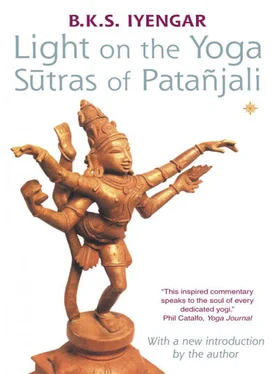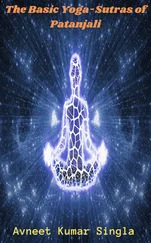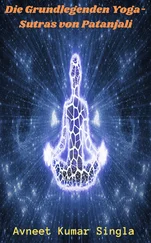Themes in the Four PadasI: Samadhi Pada
Patañjali’s opening words are on the need for a disciplined code of conduct to educate us towards spiritual poise and peace under all circumstances.
He defines yoga as the restraint of citta , which means consciousness. The term citta should not be understood to mean only the mind. Citta has three components: mind ( manas ), intelligence ( buddhi ) and ego (ahamkara) which combine into one composite whole. The term ‘self’ represents a person as an individual entity. Its identity is separate from mind, intelligence and ego, depending upon the development of the individual.
Self also stands for the subject, as contrasted with the object, of experience. It is that out of which the primeval thought of ‘I’ arises, and into which it dissolves. Self has a shape or form as ‘I’, and is infused with the illuminative, or sattvic , quality of nature (prakrti). In the temples of India, we see a base idol, an idol of stone that is permanently fixed. This represents the soul ( atman). There is also a bronze idol, which is considered to be the icon of the base idol, and is taken out of the temple in procession as its representative, the individual self. The bronze idol represents the self or the individual entity, while the base idol represents the universality of the Soul.
Eastern thought takes one through the layers of being, outwards from the core, the soul, towards the periphery, the body; and inwards from the periphery towards the core. The purpose of this exploration is to discover, experience and taste the nectar of the soul. The process begins with external awareness: what we experience through the organs of action or karmendriyas (the arms, legs, mouth, and the organs of generation and excretion) and proceeds through the senses of perception or jñanendriyas (the ears, eyes, nose, tongue and skin). That awareness begins to penetrate the mind, the intelligence, the ego, the consciousness, and the individual self ( asmita ), until it reaches the soul ( atma). These sheaths may also be penetrated in the reverse order.
Asmita’s existence at an empirical level has no absolute moral value, as it is in an unsullied state. It takes its colour from the level of development of the individual practitioner ( sadhaka). Thus, ‘I-consciousness’ in its grossest form may manifest as pride or egoism, but in its subtlest form, it is the innermost layer of being, nearest to the atman. Ahamkara, or ego, likewise has changing qualities, depending on whether it is rajasic, tamasic or sattvic . Sattvic ahamkara usually indicates an evolved asmita.
The chameleon nature of asmita is apparent when we set ourselves a challenge. The source of the challenge lies in the positive side of asmita , but the moment fear arises negatively, it inhibits our initiative. We must then issue a counter-challenge to disarm that fear. From this conflict springs creation.
Asana , for example, offers a controlled battleground for the process of conflict and creation. The aim is to recreate the process of human evolution in our own internal environment. We thereby have the opportunity to observe and comprehend our own evolution to the point at which conflict is resolved and there is only oneness, as when the river meets the sea. This creative struggle is experienced in the headstand: as we challenge ourselves to improve the position, fear of falling acts to inhibit us. If we are rash, we fall, if timorous, we make no progress. But if the interplay of the two forces is observed, analysed and controlled, we can achieve perfection. At that moment, the asmita which proposed and the asmita which opposed become one in the Asana and assume a perfect form. Asmita dissolves in bliss, or satcitananda (purity-consciousness-bliss).
Ahamkara, or ego, the sense of ‘I’, is the knot that binds the consciousness and the body through the inner sense, the mind. In this way, the levels of being are connected by the mind, from the soul, through the internal parts, to the external senses. The mind thus acts as a link between the objects seen, and the subject, the seer. It is the unifying factor between the soul and the body which helps us to uncover layer after layer of our being until the sheath of the self ( jivatman ) is reached.
These layers, or sheaths, are the anatomical, skeletal, or structural sheath (annamaya kosa); the physiological or organic sheath (pranamaya kosa); the mental or emotional sheath (manomaya kosa); the intellectual or discriminative sheath (vijñanamaya kosa); and the pure blissful sheath (anandamaya kosa). These kosas represent the five elements of nature, or prakrti: earth, water, fire, air and ether. Mahat , cosmic consciousness, in its individual form as citta , is the sixth kosa, while the inner soul is the seventh kosa. In all, man has seven sheaths, or kosas, for the development of awareness.
The blissful spiritual sheath is called the causal body (karana sarira), while the physiological, intellectual and mental sheaths form the subtle body (suksma sarira), and the anatomical sheath the gross body (karya sarira). The yoga aspirant tries to understand the functions of all these sheaths of the soul as well as the soul itself, and thereby begins his quest to experience the divine core of being: the atman.
The mind permeates and engulfs the entire conscious and unconscious mental process, and the activities of the brain. All vital activities arise in the mind. According to Indian thought, though mind, intelligence and ego are parts of consciousness, mind acts as the outer cover of intelligence and ego and is considered to be the eleventh sense organ. Mind is as elusive as mercury. It senses, desires, wills, remembers, perceives, recollects and experiences emotional sensations such as pain and pleasure, heat and cold, honour and dishonour. Mind is inhibitive as well as exhibitive. When inhibitive, it draws nearer to the core of being. When exhibitive, it manifests itself as brain in order to see and perceive the external objects with which it then identifies.
It should be understood that the brain is a part of the mind. As such, it functions as the mind’s instrument of action. The brain is part of the organic structure of the central nervous system that is enclosed in the cranium. It makes mental activity possible. It controls and co-ordinates mental and physical activities. When the brain is trained to be consciously quiet, the cognitive faculty comes into its own, making possible, through the intelligence, apprehension of the mind’s various facets. Clarity of intelligence lifts the veil of obscurity and encourages quiet receptivity in the ego as well as in the consciousness, diffusing their energies evenly throughout the physical, physiological, mental, intellectual and spiritual sheaths of the soul.
God, Paramatman or Purusa Visesan, is known as the Universal Soul, the seed of all (see 1.24). The individual soul, jivatman or purusa, is the seed of the individual self. The soul is therefore distinct from the self. Soul is formless, while self assumes a form. The soul is an entity, separate from the body and free from the self. Soul is the very essence of the core of one’s being.
Like mind, the soul has no actual location in the body. It is latent, and exists everywhere. The moment the soul is brought to awareness of itself, it is felt anywhere and everywhere. Unlike the self, the soul is free from the influence of nature, and is thus universal. The self is the seed of all functions and actions, and the source of spiritual evolution through knowledge. It can also, through worldly desires, be the seed of spiritual destruction. The soul perceives spiritual reality, and is known as the seer (drsta).
Читать дальше












